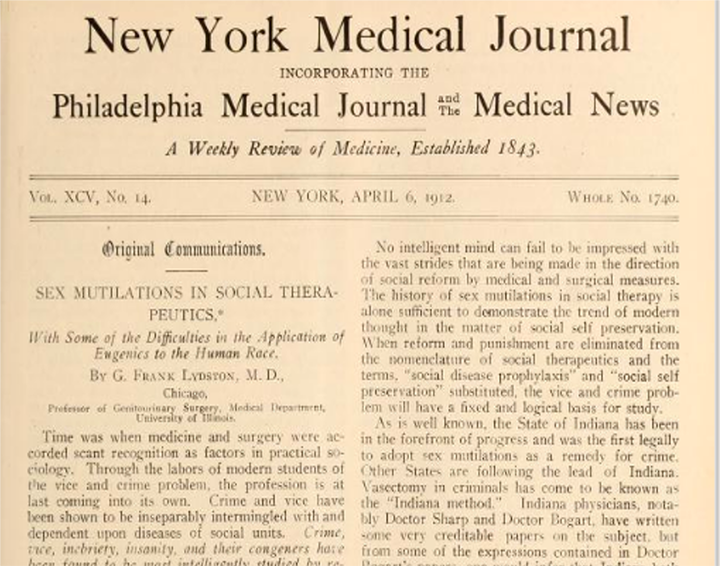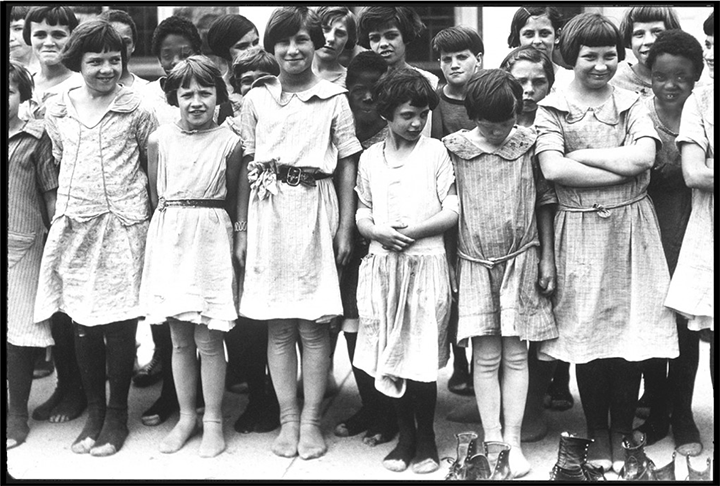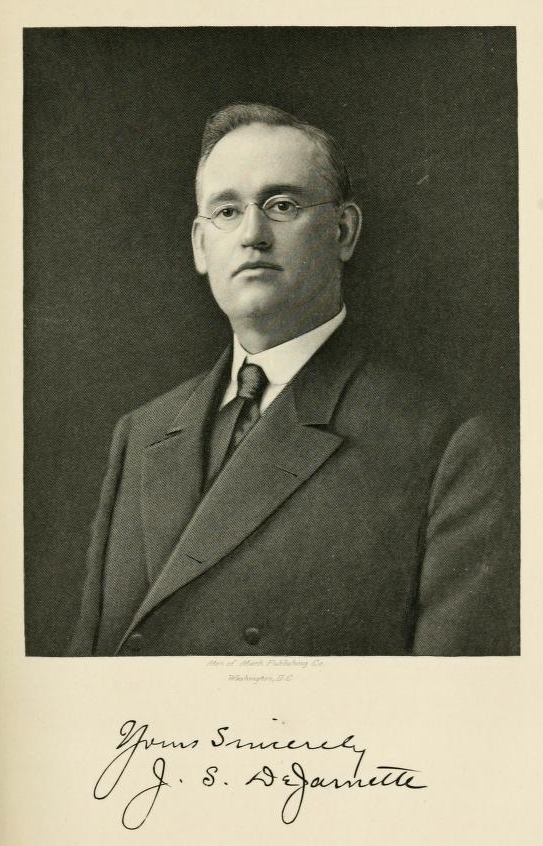
The Heart of ABA: Science To The Rescue
Author: Jana Burtner
A dark history of failed institutions, eugenics, experimentation, and the triumph of human-centered science over bigotry and neglect.
The historical and clinical content of this blog is based on work by Thomas Freeman, MS, BCBA, LBA-NY, LBA-MA, who has spent many years working and researching in the field. Many of the ideas presented below originated from a lecture on eugenics presented in 2019, for which Freeman has a book currently in development. This article reflects much of his work and research, and I am grateful to be able to present this content with his support.
For as long as I can remember, when driving on interstate 81 past the outskirts of Staunton, VA I have eyed two huge Greek Revival-style buildings just off the side of the road. The sister red-brick buildings have a dormitory-look to them, and I remember as a kid wondering aloud what the buildings were for, and why such pretty and behemoth buildings would sit abandoned. My mom told me it was a hospital that had closed down a few years before. It was probably a few years later that I actually looked into it, discovering that it was formerly a detached section of Western State Hospital, a mental hospital for children, with a grim reputation, the DeJarnette Center for Human Development (formally, the DeJarnette State Sanatorium).
And for most of my childhood, that was the extent of my connection to and understanding of mental illness or disability as it related to behavior. At the time I did not know what a “sanatorium” was. I suppose at some point I’d heard the word associated with “eugenics”, but I didn’t know what that meant either, other than assuming they must be bad because of the way adults talked about them in hushed tones. As a curious adult, I’m a little disappointed in my younger self for not digging a little deeper, if for no other reason than the eerie sense of wonder I felt around those old buildings.
Today, as a graphic designer, my familiarity with the field of applied behavior analysis was little more than some moderately-thorough internet research I did prior to an interview to decide whether the field was something I’d be interested in, and ensuring ABA Technologies was a company I wanted to be associated with. For the last year, when someone asks me what this company I work with does, I watch their eyes glaze over a bit at my fumbled response. It’s not their fault; the way I’ve been framing it has probably not made it seem glamorous, and my attempt to explain the field using my thin familiarity with it likely wasn’t all that captivating.
Inspired by a presentation on the history of eugenics in the U.S. given by Tom Freeman, Senior Vice President at ABA Technologies, I finally took a deep dive into the field of behavior analysis, how it came to be and its relevance today, based on the research he shared. Here, I will try to share some pivotal moments in the twisted history that led to the need for applied behavior analysis, and why this relatively new field of study has been critical to reforming an entirely immoral system in our recent history.
What follows is a partial presentation of Freeman’s December 2019 presentation to our team and his CE on the Evolution of Ethics, which I have had the honor of reintroducing with the addition of my own perception of its present-day relevance. The photos, content, and CE belong to Tom Freeman and ABA Technologies, Inc.
SOCIAL SURGEONS
Frank Lydston was a surgeon and medical professor. At first glance at his historical resumé, I likened him to a Ben Carson of the 1910s, a respected surgeon whose noble profession gave him the platform he then used to evangelize his own non-science-based politics, or in the case of Lydston, his view on social reform… but the comparison stopped when I learned that Lydston openly endorsed "sex mutilation as a remedy for crime” (as seen in his NYMJ article below). Lydston's approach pointed to medical doctors as the best suited to deal with the "ills" of society, or as he called the practitioners, "social surgeons." (He also performed experiments à la Nazi Germany in the sexual mutilations referenced above, but that's another rabbit hole…)

The cancer these doctors/social surgeons were tasked to remove? Lydston referred to them as "human culls", or persons with a history of “crime, prostitution, vice in all forms, inebriety, insanity, epilepsy, idiocy, vagabondage [or homelessness], pauperism [or poverty], sex perversion and inversions, venereal disease, tuberculosis… are all inextricably associated with degeneracy.”
His proposed remedy for these illnesses? He stated, "…I will go further than most and state that in my opinion some culls should be even more radically dealt with… Should he prove to be incorrigible he should be permanently removed preferably by life imprisonment at productive labor or if this be unpracticable, by killing him…" and more specifically, "The social cancer should be removed by the social surgeon – the executioner… a hermetically sealed apartment with a secret pipe for the admission of deadly gas would be my suggestion.”
Woof.
HOW DID WE GET THERE?

It’s not hard to see when you look back just a century or two. The first public institution in the US for folks with intellectual disabilities was founded in 1848, and for the first 30+ years things were off to a great start, until an unfortunate social current began to gain traction. The term "eugenics" was coined in 1883 (Greek words, eu: good, well; genes: born), just a few years before the institution saw a change in leadership. Dr. Walter E. Fernald had previously written of the type of institutionalized individuals there as a burden, "a predatory class.”
Other folks in the medical community at the time, like the aforementioned Lydston, decided to share their own ideas for the movement as well. Despite having no roots in data or science, the tide began to turn toward “treatments” that were altogether immoral and abhorrent.
As the trend toward eugenic ideology became more popular in the beginning of the 20th century, it gained support in legislation. Congress passed the Immigration Act of 1924, favoring northern and western northern and western Europeans over southern/eastern Europeans, Asians, Africans, Jews (think: the Woodsworth Hierarchy, Strangers Within Our Gates). Coolidge, who took the presidency the year prior, pushed the legislation through, and remarked, "America must be kept American."

The immigration act had basis in the work of Dr. Henry Goddard, a psychologist and proponent of eugenics, who proposed a classification of people based on IQ test results from the American Association for the Study of the Feeble-Minded in 1910: Moron, Imbecile, Idiot. He stated that morons, the greatest of these, was "unfit for society" and should be institutionalized, sterilized, or both.
If that calls to mind the likes of Nazi Germany, it’s worth mentioning that they were following along. After the Immigration Act passed in the US, Hitler penned in Mein Kampf, "There is today one state in which at least weak beginnings toward a better conception [of immigration] are noticeable. Of course, it is not our model German Republic, but the United States."
In 1927, the US Supreme Court heard upheld the sterilization of an 18-yr-old woman in Buck v Bell. Carrie Buck, living in the Virginia State Colony for Epileptics and Feebleminded. Her mother, Emma, classified as a "low grade moron," was also an inmate there due to her “feeblemindedness and promiscuity” (having a child out of wedlock).
Carrie was committed to the facility at the petition of her foster parents, the Dobbs family, shortly after she bore a child, Vivian. Vivian was a child born as result of a rape by Clarence Garland, the Dobbs' nephew, and she was remanded to the custody of the Dobbs family once Carrie was institutionalized. The court voted 8–1 to uphold her sterilization, and in the majority opinion Oliver Wendell Holmes, Jr. wrote:
"It is better for all the world if, instead of waiting to execute degenerate offspring for crime or to let them starve for their imbecility, society can prevent those who are manifestly unfit from continuing their kind... Three generations of imbeciles are enough."
Buck v Bell, 274 U.S. 200 (1927)
In the immediate aftermath of the SCOTUS ruling—
- an estimated 64,000+ forced sterilizations were conducted in the United States
- California alone sterilized 9782 individuals, mostly women: “Bad girls,” “oversexed,” “passionate,” “wayward,” and some only because they were deemed to have oversized sexual organs
- mental institutions practicing "lethal neglect"
- eugenics options expanded to
- Segregation
- Deportation
- Marriage prohibition
- Compulsory sterilization
- Castration
- Withholding medical treatment
- Euthanasia
These practices became standard for facilities alleging to treat or care for individuals with intellectual disabilities. During the 1945-6 Nuremberg War Crimes trials, several Nazis would quote Holmes’ Buck v. Bell Supreme Court decision in their own defense, and also cited the California statutes on forced sterilization.
EVEN DARKER
Individuals in institutions in the 1930s-40s experienced overcrowded facilities, malnourishment, and were forced to perform hard manual labor (most patients between the ages of 5-16 years), and were subjected to involuntary testing (ex., polio vaccines), cruel neglect and horrific experimentation.

Though framed as ideal homes for the disabled, a few were revealed for their disgrace through journalistic photographs and documentary exposés, but despite a growing public awareness of the deplorable conditions, many facilities were not closed until even the late 1990s.
Examples of the abuses that took place within the walls of these supposed care-facilities are overwhelming. Patients endured physical and sexual abuse, and commonly were subjected to now-infamous medical studies carried out throughout the 1940s-1970s, such as the case of Saul Krugman (New York University) and Robert W. McCollum (Yale University) intentionally infecting patients with hepatitis. In the case of the Fernald School (whose namesake, as previously mentioned, referred to his patients as a burden and predatory class) students were tricked into "nutrition studies," where MIT professor Robert Harris promised goodies like Boston Red Sox tickets and free breakfast for their science club in exchange for participation in their study of iron and calcium supplements, without disclosing that the supplements were radioactive. These experiments weren’t made public for some 40–50 years, when a federal committee revealed them in 1994.
A LIGHT IN THE DARK

When the field of Behavior Analysis first emerged, it was known as "Radical Behaviorism." B. F. Skinner (the father of Behavior Analysis) wrote Behavior of Organisms in 1938, and after many years and lots of research and data collection, followed that with Science and Human Behavior in 1953. In this, he laid the foundation for modern behavioral science. President Truman signed the National Mental Health Act in 1946, calling for research into the mind, brain, and behavior of people in an effort to reduce mental illness. This established the National Institute of Mental Health in 1949, and it was around a decade later that experts began moving people out of institutions and back into communities. This work is so very new. Practices using scientific data-backed analysis only began in earnest in the late 1960s. But there is hope in that the transformation toward proper care is happening rapidly over the last 70 years.
As scientific research picked up and more data was collected, the initial imprint that Skinner’s work made has become a tectonic shift toward behavior analysis. In 1968 the US government backed Project Follow Through, the largest educational experiment ever conducted, studying teaching and learning for over 200,000 at-risk children from kindergarten through the 3rd grade, and spanning a wide range of demographic variables (economic, geographic, ethnic, etc.). In 1979, the National Alliance on Mental Illness (NAMI) was founded to encourage advocacy, support, education and public awareness for people affected by mental illness. Eugenics-based sterilizations and state boards of eugenics were finally phased out in the early 1980s.

What follows are examples which I find lend cultural relevance to the teachings from Freeman, and how they’ve begun to shape my way of viewing present-day behavioral issues.
There have certainly been growing pains, and there is much progress to be made yet. At first, as persons were reintegrated to communities from institutions, the influx of a new population who needed intense care and/or support saw their communities slow to adapt. In the 1990s, it was discovered that many people with mental illness had funneled into the criminal justice system. Consider the March 2020 death of Daniel Prude in a fatal encounter with law enforcement in Rochester, NY, which has recently called to question not only societal prejudices around race, but also New York’s Mental Hygiene Law and our ability to provide care for those in crisis. Consider also the ongoing investigation into an immigrant detention facility in Georgia where women who received gynecological care were given medically unnecessary sterilizing surgeries and procedures without consent. The work is far from done.
That said, it deserves mentioning that the strides made toward individual behavioral intervention in the last 10-12 years have been exponential, perhaps partially credited to the exponentially increased speed and accessibility of information in the digital age. As scientific data is more readily available, it is harder to get lost following false prophets.
The 2009 National Standards Report published by The National Autism Center stated that:
- About 2/3s of the established treatments were developed exclusively from behavioral literature
- The other 1/3 of established treatments were derived predominantly from behavioral literature
In 2010, Dr. Thomas Frazier, et al., published research on the Effectiveness of Medication Combined with Intensive Behavioral Intervention for Reducing Aggression in Youth with Autism Spectrum Disorder, which conclusively found that behavioral treatment combined with antipsychotic medication is the most effective approach in reducing aggressive behaviors in children with Autism Spectrum Disorder (ASD). Today, although applied behavior analysis treatment is perhaps best recognized for its applications with the ASD community, the science is reaching many other direct applications, including organizational behavior management, behavior-based safety, parenting and foster parenting, behavioral gerontology, and many more.
In a recent meeting, Tom described behavior analysis more plainly than I’ve ever been able to: “Behavior analysis is the science of how learning occurs.” The next time someone asks me about the company I work for or about ABA, I’ll be citing that concise description. As my understanding grows I am finding that the more I learn about behavior analysis, the more I see clearly how it has an application in many aspects of everyday life, community, culture, and current events.
Driving back from a recent visit with some family in the Shenandoah valley, I passed by the abandoned site of the former Western State Hospital again, and it sparked my curiosity—could humanitarian crimes like these really have occurred this close to home, and without being common knowledge in the surrounding community?

Once again, in the digital age this information is much more accessible than it was when I was just a kid watching the stoic buildings pass by through the car window. The two matching structures by the interstate on the outside of town were a private pay unit of the Western State Hospital, the buildings named after Dr. Joseph DeJarnette, the director of the hospital at the time when the unit was opened. He was the director for nearly 40 years, 1905 to 1943. He was an outspoken proponent of racial segregation and eugenics, including heinous practices such as compulsory sterilization for his patients. For a decade and a half DeJarnette unsuccessfully lobbied Virginia to pass a compulsory sterilization law. Unsuccessfully, that is, until 1924, when a new Governor of Virginia who supported the eugenics movement had been elected, and passed Virginia’s Eugenical Sterilization Act, citing a high economic toll the public institutions had on the state and implementing the sterilization act as an alleged cost-saving measure. Electroshock therapy experiments and lobotomies were performed in the same facility, and DeJarnette himself performed many of the 1,200 sterilization operations that took place during his tenure.
When the statute for involuntary sterilization went before the US Supreme Court in 1927 (Buck v. Bell), DeJarnette testified as an expert witness against Carrie Buck. In 1934 he wrote to the General Assembly in favor of Nazi Germany’s eugenics program, asking to broaden the scope of Virginia’s sterilization law saying, “the Germans are beating us at our own game and are more progressive than we are.”

It was only a couple of decades ago that the windows and doors of the old DeJarnette buildings were boarded up, but the grisly events that took place within the walls seem to have faded from view faster than the walls themselves. A quick internet search finds hundreds of photos of the former hospital, with urban exploration photographers boasting about sneaking past the no-trespassing signs to get inside. It’s rumored that some homeless people find shelter in the dark rooms. I’ve heard old friends talk about sneaking onto the grounds with the excitement of amateur ghost-hunters, fervently describing how still and stale and thick the air is, which causes the paint to peel from the walls and ceilings inside, swearing the buildings are haunted by former patients.
It’s clear to me now, as horrific as the events that took place within the walls of the DeJarnette buildings were, what is most scary is that these events were a whole section of our recent history I never would have known about until being introduced through behavior analysis.
In a time when it feels like our everyday life has been flipped on its head, when racial tensions and ideological divisions seem to divide us more than ever, when every news cycle seems to include legislative movements toward broad-stroke solutions for complicated issues effecting everything from immigration to healthcare, it is history like this that we need to know.
Sharing this history is important not only to see the length we’ve come, but because it is important to understand how we have gotten to where we are now. In times of crisis there is a tendency to backslide, and we’ve learned too much to repeat this dark section of our history. As we continue to collect and analyze data and use the knowledge we gain through the science of behavior to guide our own behaviors, communities, and cultures. It’s my hope that mission-driven organizations like ABA Technologies can continue to help push the needle toward a more positive future of behavior for all of us.
 Evolving Ethics in Practice
Evolving Ethics in Practice
Tom Freeman’s CE course titled, Evolving Ethics in Practice: Team Processes, Communication, and Coordination of Services discuss the evolution of treatments for individuals with intellectual disabilities over the last 150 years, with a special focus on the influence of the eugenics movement of the early 20th century. Includes a broader discussion of the character and evolution of ethical standards. Examines the ethics of coordinating services with other interdisciplinary team members and the nature of evidence-based practice; presents some effective techniques for evaluating various alternative treatments that may confront the behavior analyst in clinical practice. Also discusses some pitfalls of using social media in practice and presents some thoughts relating to the effective communication of the benefits of ABA to the public at large.








